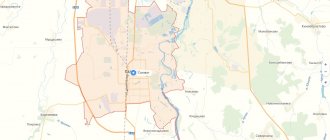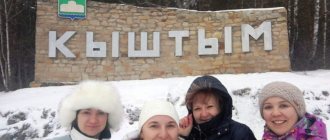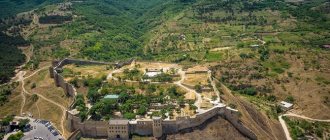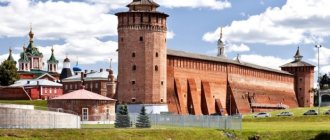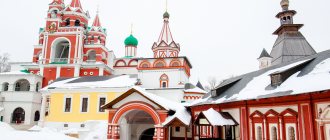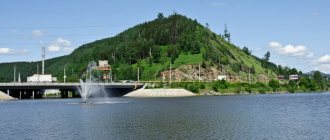City in Omsk region, Russia
| Isilkul Isilkul | |
| City [1] | |
| Flag | |
| Location of Isilkul | |
| Isilkul Location of Isilkul Show map of Russia Isilkul Isilkul (Omsk region) Show map of Omsk Oblast | |
| Coordinates: 54°57'N 71°15'E / 54.950°N 71.250°E / 54.950; 71.250 Coordinates: 54°57'N 71°15'E. / 54.950°N 71.250°E / 54.950; 71.250 | |
| A country | Russia |
| Federal subject | Omsk region [1] |
| Based | 1895 |
| Government | |
| • Head of Administration | Vladimir Suslenko |
| Height | 120 m (390 ft) |
| population size (2010 Census) [2] | |
| • General | 24 482 |
| • Evaluate (2018) [3] | 22 903 ( -6,4% ) |
| Administrative status | |
| • Subordinate | Isilkul city of regional significance [1] |
| • Capital from | Isilkul district [1], the city of Isilkul of regional significance [1] |
| Municipal status | |
| • Municipal district | Isilkul municipal district [4] |
| • Urban village | Urban settlement Isilkul [4] |
| • Capital from | Isilkul municipal district [4], urban settlement Isilkul [4] |
| Timezone | UTC+6 (MSK+3[5]) |
| Postal code [6] | 646020, 646023–646025 |
| OKTMO ID | 52615101001 |
Isilkul
(Russian: Isilkul, Kazakh: Есілкөл, romanized: Esilkól) is a city in Omsk Oblast, Russia, located 120 km (75 mi) west of Omsk, the administrative center of the region. Population: 24,482 (2010 census); [2] 26,549 (2002 census); [7] 26,430 people (1989 census). [8]
Administrative and municipal status[edit]
As part of the administrative divisions, Isilkul serves as the administrative center of the Isilkul District, even though it is not part of it. [1] As an administrative division, it is included separately as the city of Isilkul of regional significance
- an administrative unit with a status equal to that of districts.
[1] As a municipal entity, the city of Isilkul of regional significance is included in the Isilkul municipal district as the urban settlement of Isilkul
. [4]
Religion
The wooden church at the Isilkul railway station, built at the expense of the Baev spouses, was consecrated on January 18, 1898 in the name of Moscow Saints Peter, Alexy, Jonah and Philip [8].
Since June 6, 2012, Isilkul has been the cathedral city of the Isilkul and Russo-Polyansky diocese of the Omsk Metropolis. The temple of the New Martyrs and Confessors of Russia, built in 2004, became the cathedral.
Temples
- Moscow Saints Peter, Alexy, Jonah and Philip (invalid?)
- New Martyrs and Confessors of Russia, Cathedral
Welcome to Isilkul: exploring the westernmost city of Siberia
This year, when borders were closed due to the pandemic, many began to travel around their country and discover their native lands. Omsk residents have the opportunity to get acquainted with the culture, traditions and way of life of different peoples without leaving our region.
From Omsk it is easy to get to Isilkul - the westernmost city of the Siberian Federal District and the southernmost city in the region. It is also located near the border with Kazakhstan.
Isilkul is located 145 km from Omsk. By train the journey takes about two and a half hours. The ticket costs 172 rubles. In a comfortable carriage (surcharge 50 rubles), with comfortable chairs and TVs, time flies even faster.
The city grew out of a station village formed during the construction of the Trans-Siberian Railway. In 1894, the first train arrived from Chelyabinsk to Omsk through the Isil-Kul railway station.
Photo: Znamya newspaper
There are several versions of the origin of the name. The station was built next to a freshwater lake, which local residents still love to visit. In one version, the word “isilkul” from the Turkic language means “rotten lake”; in another, the lake is translated from Kazakh as “blue”. The Isilkul people also call the lake Kapitanskoye. The local history museum, which will be discussed in more detail later, told another version - about the “lake of willows”. In this area, which was constantly flooded by underground waters, many willow groves grew. But the settlers cut down almost all the trees, which is why the lake bloomed and became overgrown with reeds. This is apparently where the more famous name came from.
According to Omskstat, the population of Isilkul exceeds 20 thousand people. Of these, the majority are Russians, Germans and Kazakhs.
In 2016, the regional Ministry of Culture, together with the district administration, travel agency and Russian Railways, developed the “Isilkul weekend” weekend route. However, it did not arouse much interest among Omsk residents. Developing domestic tourism is still not an easy task.
The tour included a walking tour of the city with a visit to the temple, which houses a unique porcelain iconostasis. The highlight of the trip was the center of Russian traditional culture “Svyatozar” in the village of Lesnoy, where guests were treated to master classes on making ancient Russian toys - straw and rag dolls, clay whistles, as well as a photo shoot in folk costume. There are similar workshops in Omsk, so going to another city to get acquainted with crafts seems like a dubious proposition.
Nevertheless, there is something to see in Isilkul and places to take wonderful photographs. The OMSKREGION correspondent went to Isilkul in the company of independent travel enthusiasts and now shares his impressions.
Best model library in the region
Yes, this is not an exaggeration. Next to the Isilkul station, in a two-story building, there is a modern library. In September, let us remind you that the head of the region came here to open the model library after renovation. These institutions in the Omsk region began to be updated in 2022 according to the national project. The first model library in the region was Kvartal 5/1 in Omsk. It is located on the first floor of a residential building, and therefore is inferior in scale to the Isilkul library.
This place has become a real center of attraction for the townspeople. The library captivates with its cozy interior and modern design. It’s amazing that the employees developed the project themselves.
The library is divided into zones: a local history room - with a fireplace, a large sofa, rocking chairs; a youth center with musical instruments where you can play video games, board games and watch movies; children's room; coffee bar; lecture hall; conference hall. And there are new books everywhere.
You most likely won’t be able to sign up for the library, since books are only issued here for a week. But you can take great photos: each room here is like a separate photo zone.
On Friday and Saturday the library is open until 23:00. On weekends, not many institutions in Isilkul are open late; usually everything is closed after lunch.
Nostalgia in the Museum of History and Local Lore
Despite the fact that all local history museums are similar, each has its own unique artifacts and interesting stories about local culture and life. The Isilkul Museum is located opposite the station, in the building of the former railway workers' club, built in 1926. This is one of the first club buildings in the Omsk region. Today, more than 17 thousand items are stored here, mostly donated by residents.
In the first hall, visitors are greeted by huge paintings on the wall by entomologist, animal artist, and writer Viktor Grebennikov. His early work “Departing Nature”, dedicated to the vulnerability of the world, does not have much time left to see - the wall is being eaten away by a fungus.
In the historical hall you can see a Russian hut, a Kazakh yurt with traditional costumes, utensils, furniture, and dishes. There is also a German room with an authentic iron bed from Germany. It is small and intended for a girl, because, as the guide noted, German women had to sleep sitting up so as not to ruin their hair.
Most of the hall is dedicated to the development of the railway, thanks to which Isilkul appeared.
Of particular interest to visitors is the school corner of the 1950s with rare desks, briefcases, textbooks and pioneer paraphernalia. Here you can imagine yourself in the role of a teacher or student and feel nostalgic for your school years. It’s gratifying that photography is not prohibited here, although in many museums you are not allowed to touch the exhibits so freely.
Walk around the city
Over the past few years, the central part of the city has been transformed in Isilkul. The authors of the park improvement project, apparently, wanted to please everyone at once. Next to the temple and Victory Square, where busts of the heroes of the Great Patriotic War who lived in Isilkul are displayed, there is a children's park with characters from cartoons and fairy tales, a playground, sports equipment, an area for extreme skating, and a stage.
This “hodgepodge” may surprise city guests. But on the other hand, it is very convenient when everything is nearby. There is also a Soviet amusement park here, another place for nostalgia. The carousels are not in operation, but this place attracts local schoolchildren and adults.
Problems with water and features of Isilkul shopping
Most shops, companies and institutions in Isilkul close early on weekends. At 15:00 it is already difficult to find an open private store, pharmacy or pet store.
The place to stay for the night must be arranged in advance. There is a problem with hotels in the city, so it is better to rent an apartment from a local resident, as journalists from Omsk did. But you need to know that there is a problem with water supply in Isilkul. Therefore, city residents, especially residents of apartment buildings, stock up on water ahead of time.
The essence of the problem: in 2022, the city administration entered into a contract with BlokStroyProekt LLC for the reconstruction of the water supply system. Later, law enforcement agencies found out that the head of Isilkul, Vladimir Gill, paid more than 30 million rubles for construction work, knowing that the company had not completed even a third of the work. Construction and technical expertise showed that the cost of uncompleted but paid work amounted to 24.7 million rubles. An official for exceeding official powers faces up to 10 years in prison.
Fans of entertainment and dancing in Isilkul will also have nowhere to turn around. But there are a couple of places, although you can stumble upon adventures.
Near Isilkul there is the village of Solntsevka. This village surprises with its scale. Unlike usual settlements, there are mainly cottages and estates here. Large friendly families of Germans professing Baptists live in Solntsevka. One family can have more than 15 children. Local residents value their traditions, are famous for their hospitality and speak a special German dialect, which even attracts foreign specialists. There is a large farm here where cows and horses are raised. Before Catholic Christmas, houses in Solntsevka are decorated with garlands, and the streets become fabulous, just like in films dedicated to this holiday.
Fruit nursery
One of the favorite places of Isilkul residents is a fruit nursery located near the city. It was founded in 1902 by agronomist and retired colonel of the Russian army Nikolai Zhukov. He was a very respected man, who was known not only in the Omsk province, but also far beyond its borders.
Zhukov made the first crops of spruce, pine, birch, Tatar maple, yellow acacia, and honeysuckle here. More than 40 varieties of apple trees, pears, plums, cherries, and apricots grew in the garden. The Isilkul fruit nursery supplied the Omsk region and other regions with seedlings.
This place is famous for its picturesque nature. The fruit nursery now occupies more than 700 hectares of land. But since the 1990s, no one has been caring for the gardens, and they continue to become overgrown.
Nevertheless, local residents love to walk here with friends, relax with the whole family, and play sports. In winter, a ski track is organized in the fruit nursery and competitions are held.
“OMSKREGION” expresses special gratitude to the journalist of the Isilkul newspaper “Znamya” Andrey Varkentin for organizing the trip.
